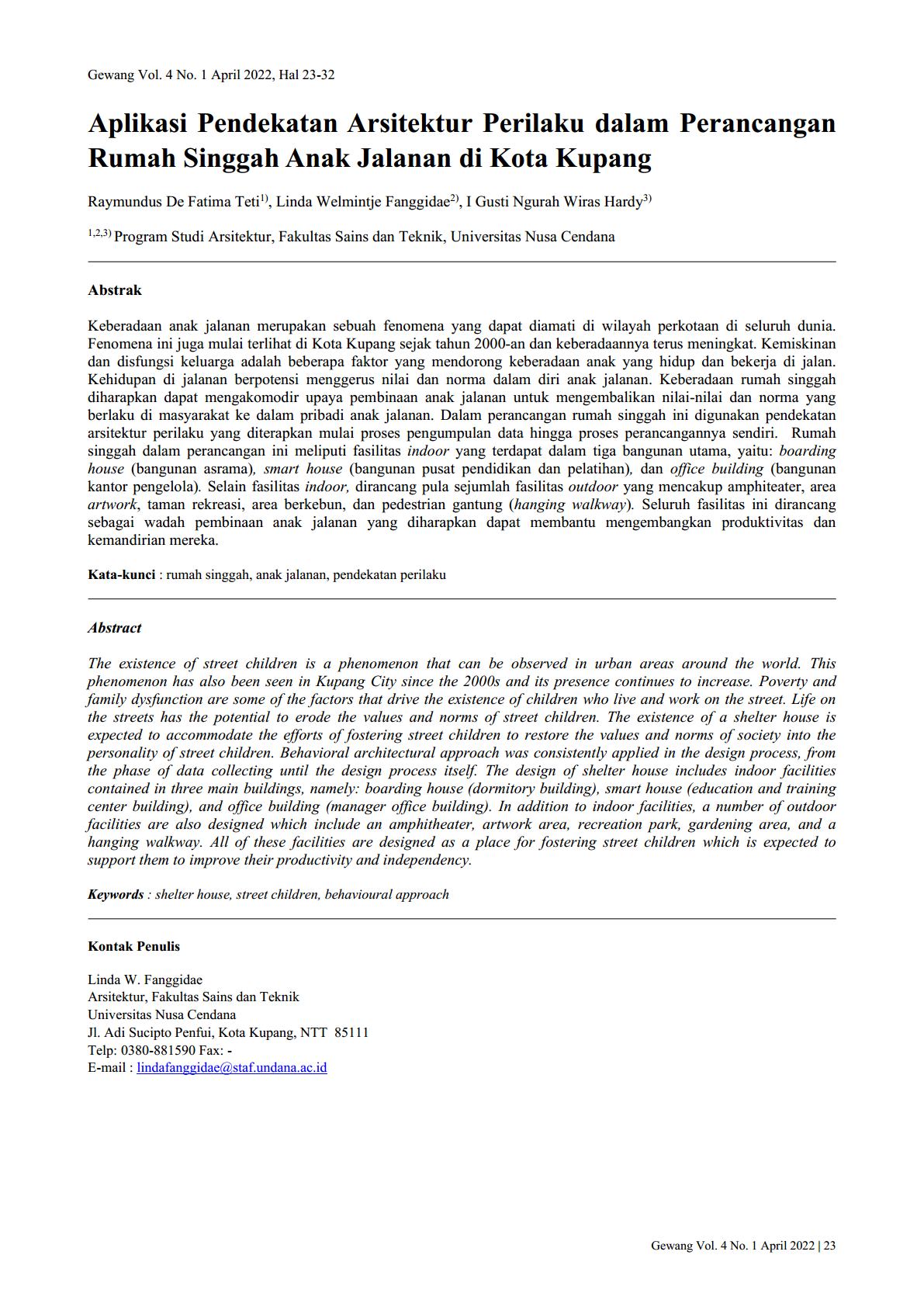Aplikasi Pendekatan Arsitektur Perilaku dalam Perancangan Rumah Singgah Anak Jalanan di Kota Kupang
Main Article Content
Abstract
The existence of street children is a phenomenon that can be observed in urban areas around the world. This phenomenon has also been seen in Kupang City since the 2000s and its presence continues to increase. Poverty and family dysfunction are some of the factors that drive the existence of children who live and work on the street. Life on the streets has the potential to erode the values and norms of street children. The existence of a shelter house is expected to accommodate the efforts of fostering street children to restore the values and norms of society into the personality of street children. Behavioral architectural approach was consistently applied in the design process, from the phase of data collecting until the design process itself. The design of shelter house includes indoor facilities contained in three main buildings, namely: boarding house (dormitory building), smart house (education and training center building), and office building (manager office building). In addition to indoor facilities, a number of outdoor facilities are also designed which include an amphitheater, artwork area, recreation park, gardening area, and a hanging walkway. All of these facilities are designed as a place for fostering street children which is expected to support them to improve their productivity and independency.
Downloads
Article Details
This license enables reusers to distribute, remix, adapt, and build upon the material in any medium or format, so long as attribution is given to the creator. The license allows for commercial use

